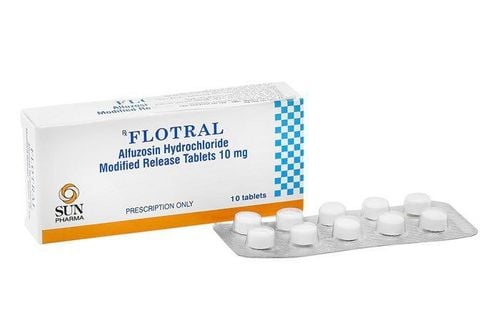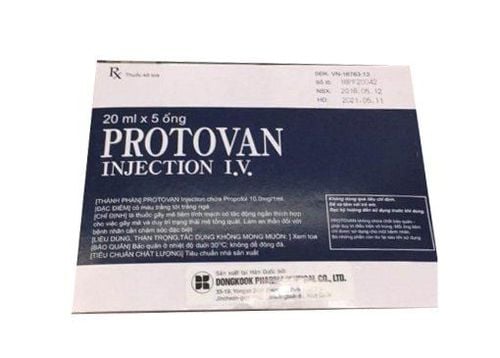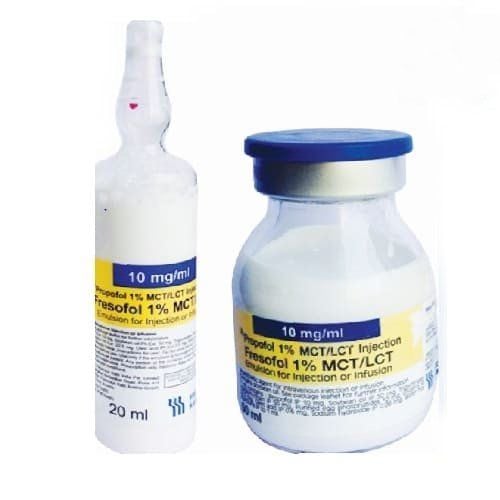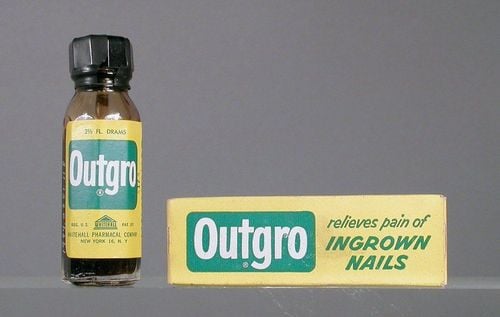This is an automatically translated article.
Suxamethonium Chloride is a muscle relaxant that belongs to the group of anesthetics, anesthetics used by prescription. Let's learn more about Suxamethonium Chloride uses, Suxamethonium Chloride how to use, dosage,... right here.1. What is Suxamethonium Chloride?
Suxamethonium Chloride – prescription drug on the list of anesthetics and anesthetics. Suxamethonium Chloride is manufactured by the pharmaceutical company Rotexmedica GmbH Arzneimittelwerk - GERMANY. In Vietnam, the drug is registered and circulated under the number VN - 16040 - 12.
Suxamethonium Chloride has the main ingredient Suxamethonium Chloride, prepared in the form of an injectable solution. Packed in a box of 10 ampoules, each containing 2ml of Suxamethonium Chloride solution for injection.
2. Uses of Suxamethonium Chloride
Suxamethonium Chloride contains the active ingredient Suxamethonium. This active ingredient is fast acting, short duration of action. After intravenous injection Suxamethonium Chloride has the effect of muscle relaxant. The duration of action after administration of Suxamethonium Chloride is determined by diffusion away from the motor plate.
The drug is rapidly metabolised, by cholinesterase in the blood plasma to sucinyl - mono choline and choline. Sucinyl - mono choline has 1/20 the activity of Suxamethonium - the ingredient in Suxamethonium Chloride. It causes non-polar neuromuscular blockade. In addition, Sucinyl - choline is slowly hydrolyzed to choline and succinic acid. A small part of Suxamethonium Chloride will be excreted unchanged in the urine. Suxamethonium - the ingredient in Suxamethonium Chloride that works as a depolarizing neuromuscular blocker. The drug competes with acetylcholine for cholinergic receptors at the motor plate. In addition, they attach to that receptor causing depolarization. But because of its high affinity for cholinergic receptors and anti-acetylcholinesterase properties, the drug causes more prolonged depolarization than acetylcholine.
The use of Suxamethonium Chloride will initially cause transient muscle contractions. The most common manifestation is muscle twitching. Next, it will cause a state of inhibition of neuromuscular transmission.
This pattern of neuromuscular blockade in subjects receiving Suxamethonium Chloride was not antagonized. It is even enhanced by anticholinesterase drugs.
In the case of long-term or repeated use of these depolarizing neuromuscular blocking agents, neuromuscular blockade similar to non-depolarizing neuromuscular blockade may occur. This condition causes prolonged respiratory failure or even apnea. Suxamethonium Chloride is commonly used for the purposes of inducing muscle relaxation during short procedures.
3. Indication of Suxamethonium Chloride
Suxamethonium Chloride is indicated in the following cases:
Support for general anesthesia; Support anesthesia for intubation; Support for muscle relaxation during surgery; Support mechanical ventilation; Assists in softening bones during fracture osteopathic procedures; ...
4. Dosage and how to use Suxamethonium Chloride
According to the manufacturer's recommendations, Suxamethonium Chloride should be used correctly, at the correct dose according to the instructions.
4.1 How to use Suxamethonium Chloride Suxamethonium Chloride is a drug that is prepared in the form of an injectable solution. Therefore, the way to use that drug is injection, intravenous infusion according to instructions. Usually, according to the manufacturer's instructions, Suxamethonium Chloride is administered intravenously. However, for some special subjects such as children, Suxamethonium Chloride can be injected deep intramuscularly. Or there is a high indication for intramuscular injection in subjects with deltoid muscle.
4.2 Dosage of Suxamethonium Chloride The dose of Suxamethonium Chloride should be taken based on age, prescribed by a doctor / pharmacist. As recommended, Suxamethonium Chloride is administered in the following doses:
By intravenous route, the starting dose is 1 mg/kg body weight. Adjustment of the dose may then add 0.5 to 1 mg/kg of body weight. Repeat injection after about 5-10 minutes. Not more than 500mg/hour. For young children and infants, the recommended dose of Suxamethonium Chloride is 2mg/kg body weight; According to the intramuscular route, the recommended dose of Suxamethonium Chloride for young children is 4-5 mg/kg body weight. Children use a dose of 4mg/kg body weight, up to a maximum of 150mg; According to the intravenous route used for prolonged procedures, the dose for both adults and children is 2.5 - 4 mg/min, up to a maximum of 500 mg/hour. In children, the infusion rate should be reduced depending on weight.
5. Contraindications Suxamethonium Chloride
Do not use Suxamethonium Chloride for the following subjects:
Family or personal history of malignant fever; Myopathy with increased serum creatinine; Glaucom closed angle; penetrating trauma to the eye; Hereditary disorders of Cholineterase in plasma; Severe burns; Multiple trauma; Widening of musculoskeletal nerves; Hyperkalemia ; Hypersensitivity or allergy to any of the ingredients contained in Suxamethonium Chloride; ... Patients need to inform the doctor about family history problems, allergies ... for advice on using Suxamethonium Chloride.
6. Suxamethonium Chloride Side Effects
While using Suxamethonium Chloride you may also experience side effects including:
Pain and muscle stiffness after surgery; Muscle twitching after injection; Glaucoma ; Arrhythmia; Increased pressure in the stomach; Anaphylactic reactions; Edema ; Erythema; Bronchospasm ; Itchy; Circulatory failure; Hypertension; Hypotension; Hyperkalemia; Increased intracranial pressure; ... Inform the doctor/medical staff of the effects when using Suxamethonium Chloride to be handled.
7. Overdose and treatment Suxamethonium Chloride
When an overdose of Suxamethonium Chloride occurs, it is necessary to quickly:
Provide respiratory support; Intravenous Atropin injection to prevent and treat side effects of Suxamethonium Chloride on cardiovascular; Use strong drugs; Transfusion of blood or frozen plasma to provide Cholinesterase to help break down Suxamethonium Chloride rapidly; Use pancuronium bromide 1 mg to relieve muscle pain, prevent non-depolarizing muscle relaxation.
8. Suxamethonium Chloride . Interactions
As recommended, Suxamethonium Chloride can cause interactions with the following drugs:
Echothiophat Iodid; Promazine; Oxytocin; Aprotinin; Chloroquine; Quinine; Terbutaline; beta blockers ; Lidocaine; Procainamide; Quinidine; Trimethaphan; Lithium carbonate; Magnesium salt; Metoclopramide; Inhalation anesthetics; Cyclophosphamide; Oral contraceptives; Corticosteroids; Some monoamine oxidase inhibitors; Addictive pain relievers; ... To ensure safety when taking Suxamethonium Chloride, please inform your doctor of all medicines you are/have been using before you have a prescription.
Suxamethonium Chloride stored at a temperature of 2 - 8 degrees C.
Above is all information about Suxamethonium Chloride, patients need to read carefully the instructions for use, consult a doctor / pharmacist before using . Note, Suxamethonium Chloride is a drug prescribed by a specialist, patients must absolutely not use it themselves.













